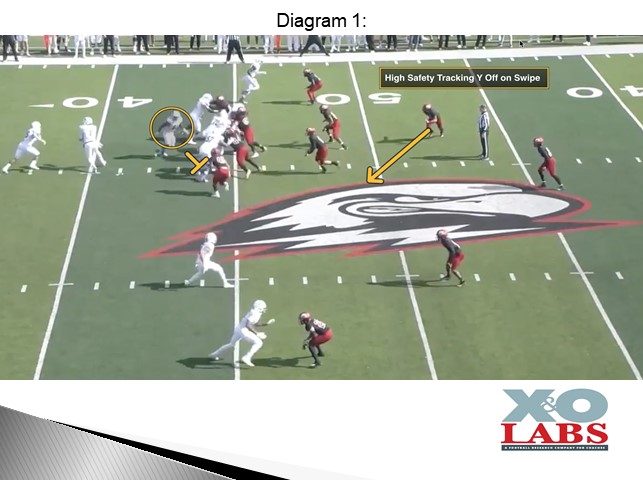By Mike Kuchar with Ryan Pugh
Offensive Coordinator/Offensive Line Coach
Abilene Christian University (TX)
Twitter: @CoachRyanPugh
If you’re an offense that majors in wide zone, then you know how important it is to handle the backside. The athletes on the perimeter today can run things down often getting you behind the sticks. Some, like Coach Pugh, would argue that the play is often made on the backside and not the front side. If the backside is handled correctly, it will produce a numbers advantage for the back to hit play side. And if you’re not an offensive operation whose linemen cut, then you’re left figuring out ways to protect the backside edge.
At Abilene Christian University, Coach Pugh and his staff do not define the read for the running back. His aiming point is the outside leg of the EMLOS if he’s in Pistol, but that will get tightened up if he’s in the off-set alignment. “We will use the aiming point of the inside leg of the Play side Tackle in those circumstances,” he said. “We will speed him up so that he can get to the read on the third step and get to his cut on the fifth step.” His read is traditionally the end man on the line of scrimmage but when it’s run to the boundary- as Coach Pugh likes to call it- that play will often cut back.
There are two base ways that Abilene Christian will handle the backside edge- slices and swipes. And when these two elements are combined it makes for an extremely efficient play.
Outside Zone Slice Concept:
The wide zone slice concept isn’t a novel idea. It’s meant to slow down the edge, or at least produce some hesitation so the play can hit front side. But there are several advantages in using the swipe exclusively against defenses that either will rock back with the second level or trace with the third level based on the movement of that Y. The beauty of the wide zone play is that it can hit either frontside or backside. But if defenses are clued into the movement of that Y, there are several ways you can manipulate having the ball hit frontside.
For example, when defenses track the high safety with the swipe motion, they become one gap short on the play side.

Similarly, when second-level linebackers track the Y on swipe, the same thing will occur. They become a gap short to the play side.










